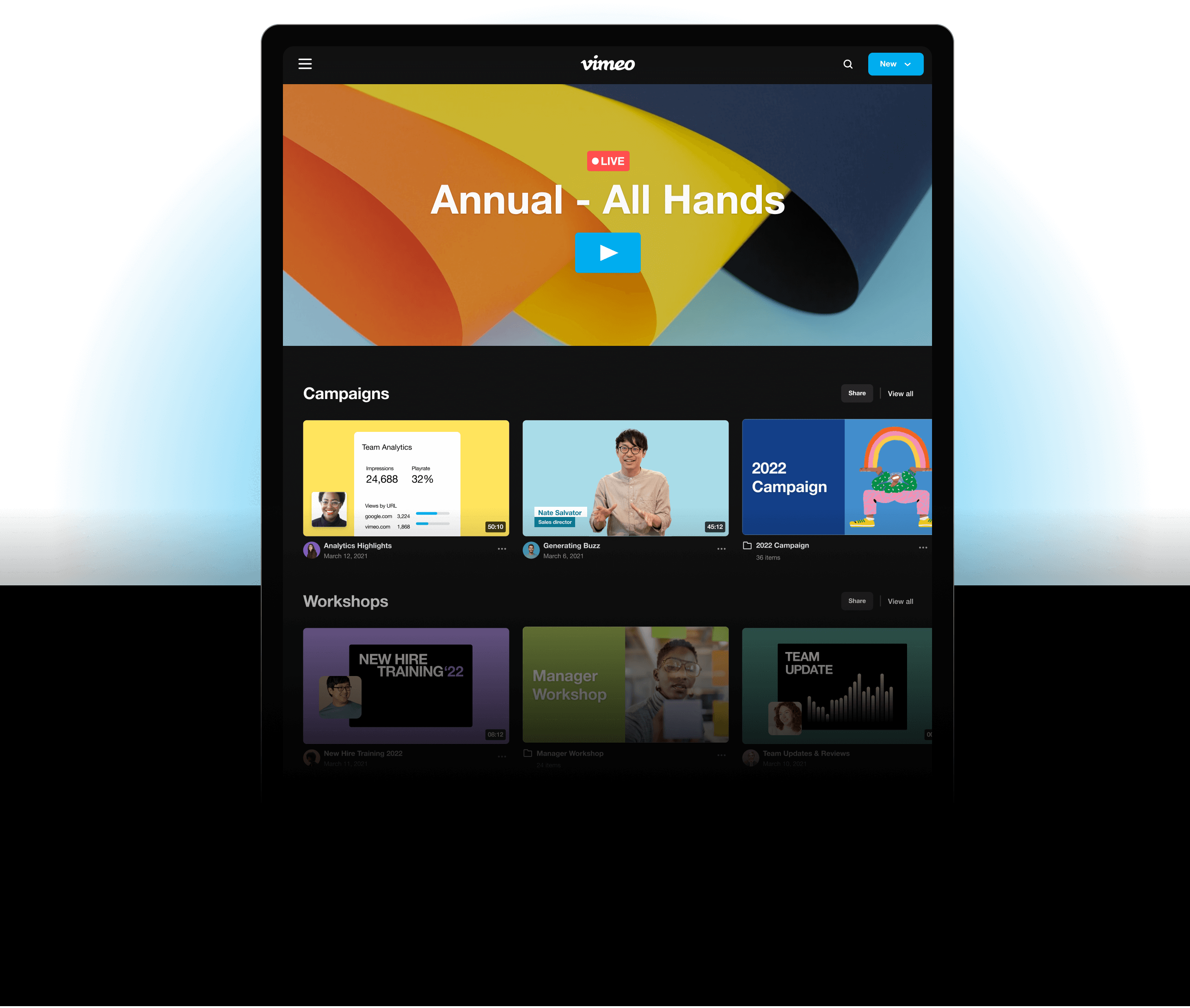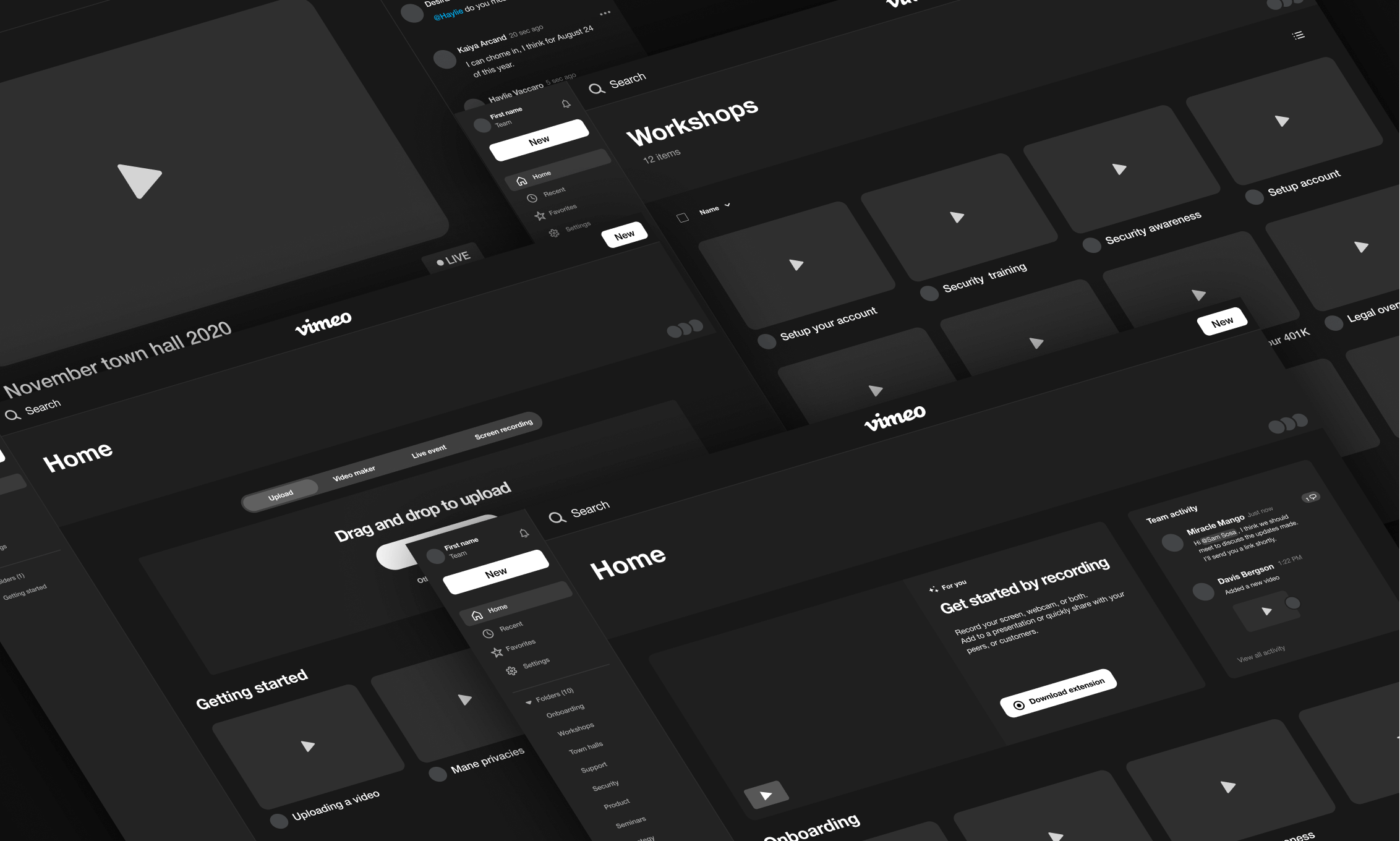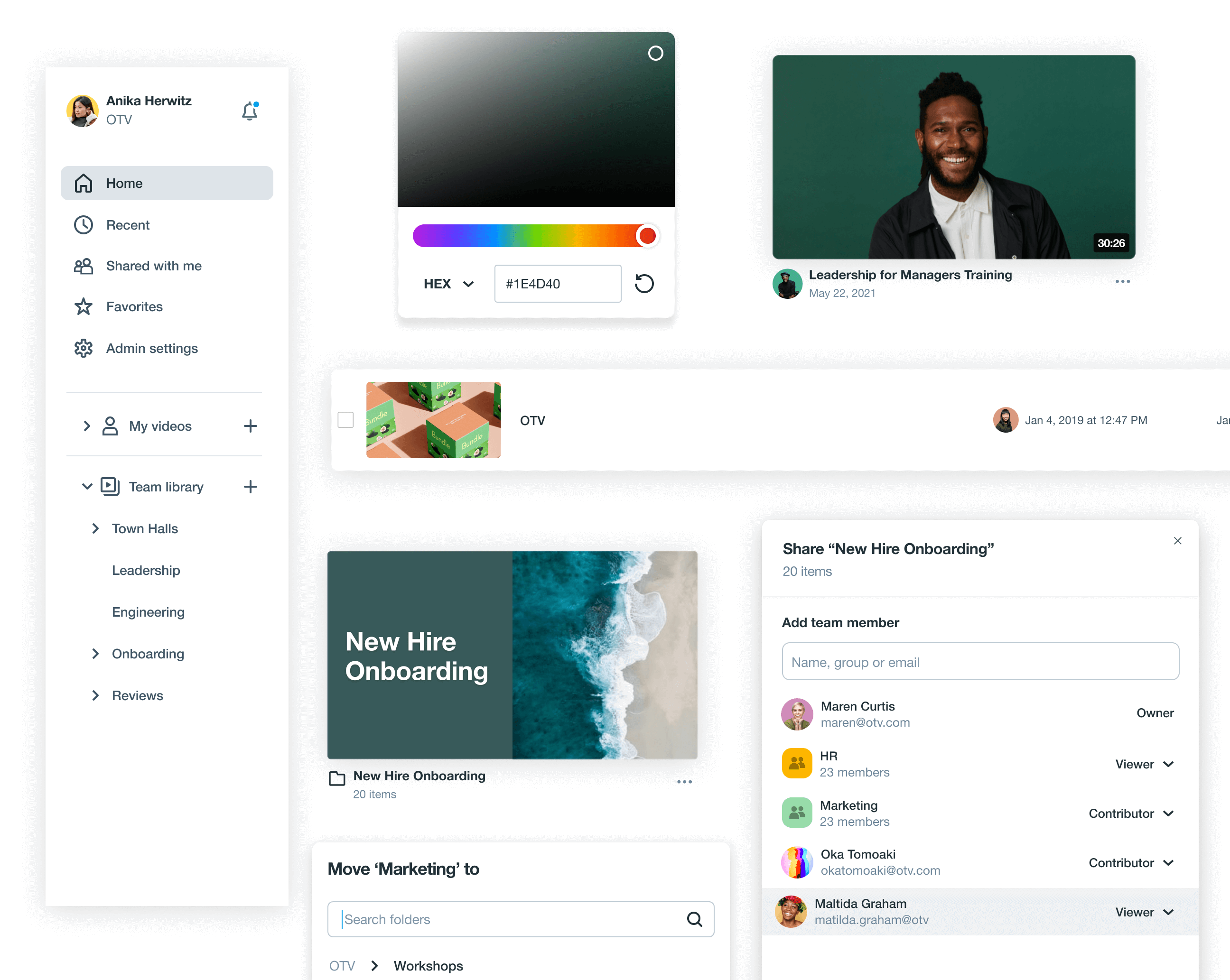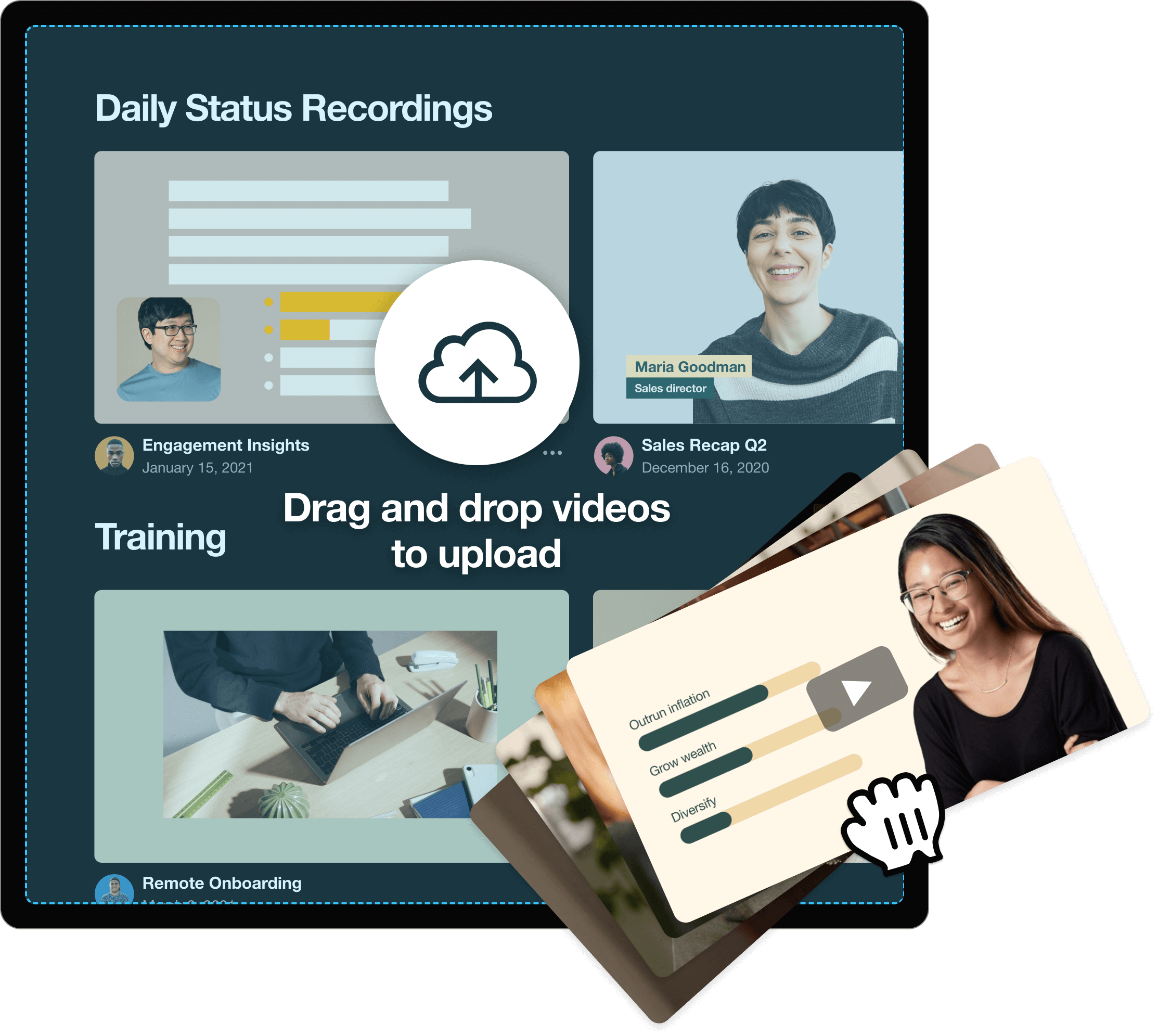Video library

Designing a video hub for teams and organizations
01
BRIEF
In 2020, the landscape for video began to change. The start of a pandemic brought with it a new reality for everyone and work shifted to remote. Companies relied on video as a means to communicate and collaborate. Vimeo’s solution for these large organizations featured an Enterprise package that was rattled with user problems as demand for video continued to grow.
I was the lead designer of a new ambitious project at Vimeo, aimed to unlock the full power of video across organizations and teams.
*To comply with my non-disclosure agreement, some information has been omitted.
YEAR
2020 - Present
MY ROLE
Product design
Strategy
Research
Prototyping
PRODUCT
Enterprise

02
CHALLENGE
An Enterpise solution with no foundation.
Vimeo's Enterprise offering was introduced on 2019 with a focus on live streaming for large orgs.
Though it was a fast growing segnment, the 2020 pandemic spiked a higher demand for more tools and capabilities.
That - tied with the influx of new enterprise users and videos surfaced key performance issues with our existing video manager whose foundation was not built to support thousands of videos.
03
DISCOVERY
Unlock video for everyone at an organization.
Our initial goal for this project was to build a strong foundation for Vimeo's enterprise offering and identify opportunities for Vimeo to provide better support and features.
Our goal was broad - so we partnered with existing enterprise customers to gather insights and get a pulse on the challenges and pain points they were experiencing with the product.
"We want a place for all our internal videos to live - such as training videos, town halls, presentations from ECG speakers.”
— IT Manager, Fitness
Key takeaways
The business opportunity for Vimeo was clear; becoming a true end to end video solution. Our users were turning to Vimeo to perform a number of different jobs. To do so, we focused on three key areas:
Video hub
Build a new core foundation that can scale and support thousands of videos.
Collaboration
Unlocking collaboration for everyone in a company in a centralized secure way.
Customization
More engaging, visual experience with customization controls for account owners.
04
SOLUTION
An Enterpise solution with no foundation.
In favor of making video library strong and performant, we revisited the architecture of Vimeo’s existing video manager which had been built with legacy code that was hard to maintain.
We worked closely with leadership to diagram solutions that would streamline our findings and begin illustrating a new experience for enterprise - and one that could scale to self-serve in the future.

The underlying structure of the new experience borrows existing components from our design system and adapts them. I worked closely with our design systems team to develop a token system that unlocked dark mode - a highly requested feature.


05
LAUNCH
Meet your video hub.
In the months leading to the release of Video library, I continued to work closely with the team to fitnesse and polish.
On May 2020, Video Library was launched as part of Vimeo’s Enterprise offering in conjuction with Vimeo going public.

Store all your videos in one place.
A new way to manage all your video assets on Vimeo, so you can sort by team, topic, or title.
New branded homepage.
Enterprise customers now have access to a cinematic and secure hompegae that acts as ahub for all their video content. The best part? Employees only see the content relevant to them.


Find what you need - faster.
Looking for a video, but can't remember the file name? No sweat. We automatically transcribe every video, and let you search by the captions. Simply enter some words from the video to find exactly what you’re looking for — fast.
06
IMPACT
Impact.
Since release we have seen exponential growth in our Enterprise offering since launch.
However - much work is still left to be done and my team and I are continuously working on continuing to make significant improvements to Video library this year.
2x
Doubled average users visits on Enterprise accounts.
682%
Increase on engagement with folder creation.
1k +
New enterprise accounts since launch.